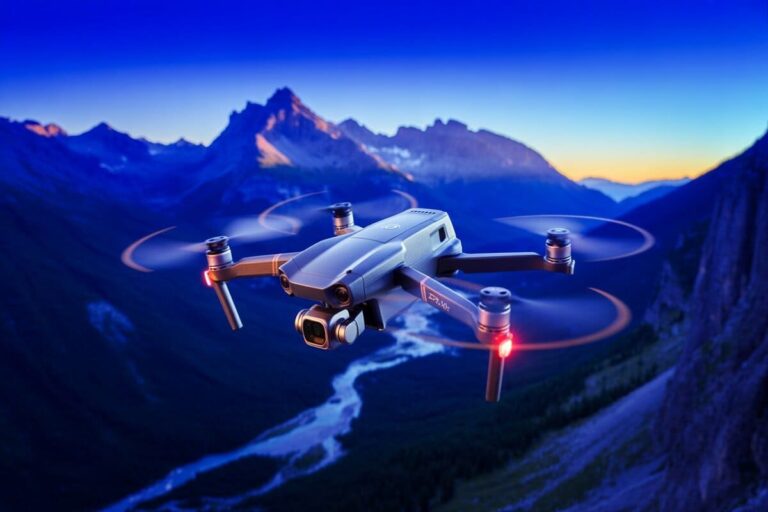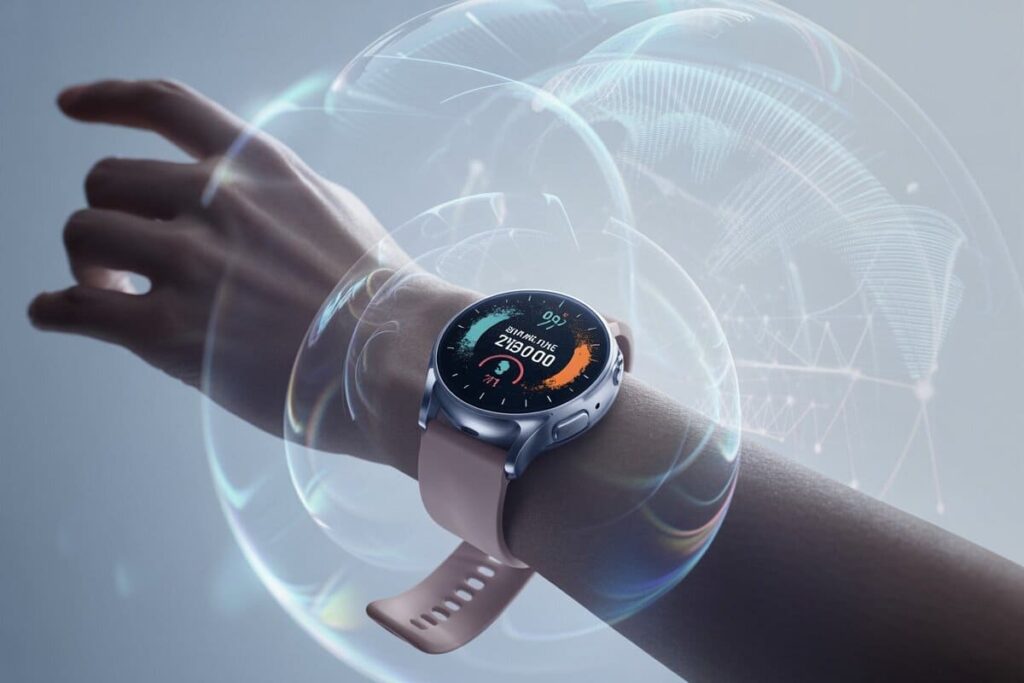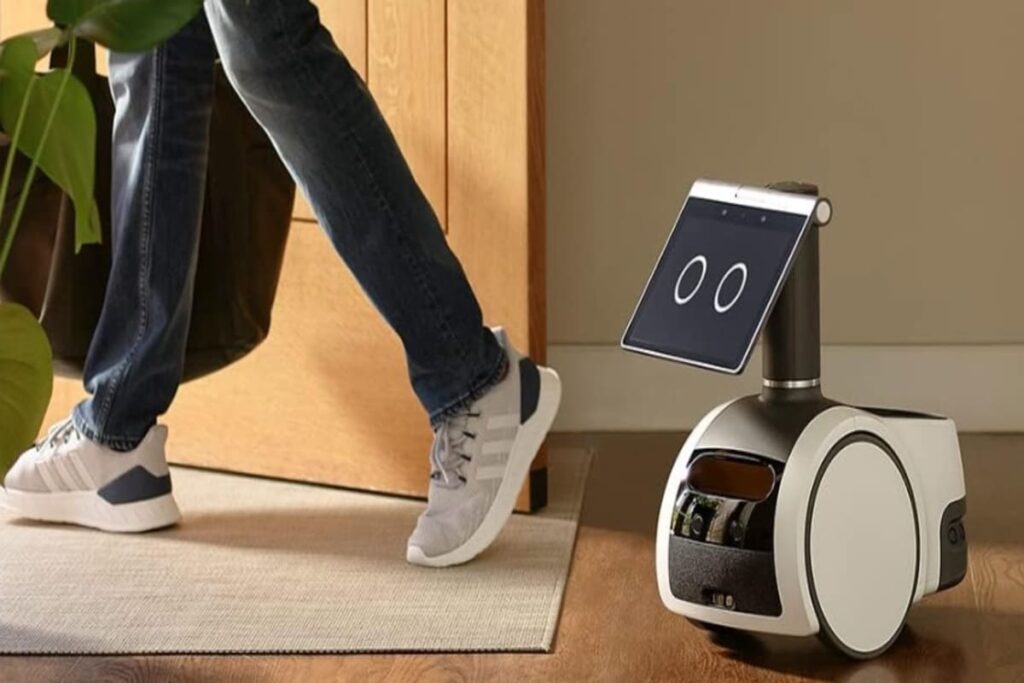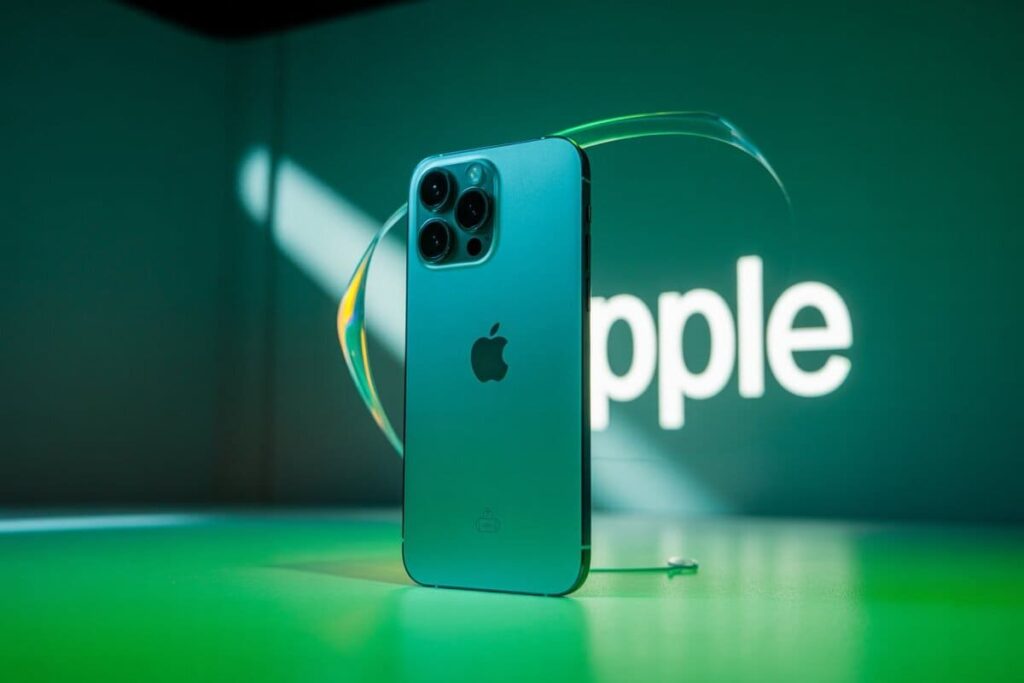Want to capture breathtaking aerial images? Released in May 2025, the DJI Mavic 4 Pro redefines aerial photography with a 100 MP Hasselblad sensor, 360° gimbal, and up to 51 minutes of flight time.
In this 2025-optimized review, we dive into the specs, performance, and limitations of the Mavic 4 Pro, tested by experts, to help you decide if it’s the best aerial photography drone on the market.
Discover why DJI remains at the forefront of innovation!
Design and Portability: Compact and Powerful
The DJI Mavic 4 Pro combines robustness with portability, ideal for photographers and filmmakers on the go.
Measuring 257.6 x 124.8 x 103.4 mm folded and weighing 1,063 g, it’s slightly heavier than the Mavic 3 Pro but still fits in backpacks.
Its aerodynamic chassis withstands winds up to 12 m/s, while the new 360° Infinity Gimbal allows for unique creative angles. LiDAR sensors and six fisheye cameras ensure safe flights even in complex environments.
- Why it stands out: Foldable design, revolutionary gimbal, wind resistance.
Cameras: Professional Quality with Hasselblad
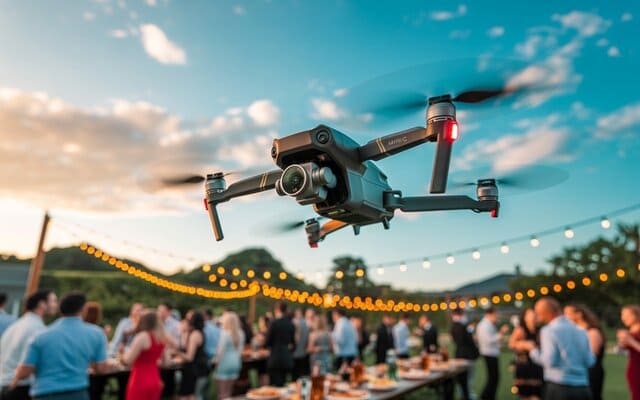
The Mavic 4 Pro elevates professional aerial photography with a three-camera system.
The main camera features a 100 MP Hasselblad CMOS 4/3 sensor, f/2.0 to f/11 aperture, and 16 stops of dynamic range, delivering sharp images even at night.
Telephoto cameras (70 mm, 48 MP, f/2.8; 168 mm, 50 MP, f/2.8) add versatility for medium and long-range captures.
- Video: Shoots 6K/60 fps (main) and 4K/120 fps (70 mm) with D-Log and HLG profiles for post-production.
- Real-world tests: Urban and natural scenes, such as Miami, showcased vibrant colors and precise details.
- Limitation: The main camera’s 4K/120 fps mode crops, reducing quality.
The Infinity Gimbal supports native vertical videos for TikTok and Instagram Reels without losing resolution, making it perfect for content creators.
Flight Performance: Speed and Endurance
The Mavic 4 Pro is one of the fastest drones of 2025, reaching 90 km/h in sport mode and 40 mph with tracking.
Its 95.3 Wh battery promises 51 minutes of flight, with real-world tests showing 37 minutes under heavy use—still better than the Mavic 3 Pro’s 43 minutes.
- O4+ transmission: 30 km range with 10-bit HDR video, even in interference-heavy areas.
- RC Pro 2 controller: 7-inch Mini-LED screen with 2000 nits brightness, perfect for sunny conditions.
Safety and Intelligence: Secure and Precise Flights
Equipped with LiDAR sensors and six fisheye cameras, the Mavic 4 Pro provides omnidirectional obstacle detection, even in low light.
ActiveTrack 4.0 accurately tracks objects in complex scenarios, such as canyons or urban settings.
The Return to Home function works without GPS, a plus in low-signal areas.
- Tests: Flawless navigation in urban and natural environments.
- Limitation: No propeller guards, making it less ideal for tight spaces.
Storage and Accessories: Tailored for Professionals
The Mavic 4 Pro is available in three packages:
- Standard: 64 GB (42 GB usable).
- Fly More Combo: Extra batteries and charging hub.
- Creator Combo: 512 GB and ALL-I 4:2:2 codec.
QuickTransfer via Wi-Fi 6 transfers files at 80 MB/s, and the hub charges three batteries in 90 minutes.
DJI Mavic 4 Pro Highlights and Limitations
Strengths
- Image quality: 100 MP sensor and 6K/60 fps for cinematic results.
- 360° Gimbal: Native vertical captures and creative angles.
- Endurance: Up to 37 real minutes, ideal for long sessions.
- Safety: LiDAR and fisheye cameras for nighttime flights.
- Advanced control: RC Pro 2 with bright screen and intuitive interface.
Limitations
- Weight: 1,063 g requires registration in regions like the FAA.
- Limited availability: Scarce in the U.S. due to tariffs.
- Crop in 4K/120 fps: Compromises quality at high frame rates.
- High price: Creator Combo at $3,899.
How Does It Compare?
- vs. Autel EVO 3: Mavic 4 Pro offers superior image quality and endurance, but Autel is more affordable.
- vs. DJI Air 3S: More compact and budget-friendly, Air 3S is great for beginners but lacks the 100 MP sensor.
- vs. DJI Inspire 3: Geared toward professional cinema, Inspire is less portable and more expensive.
Who Is the DJI Mavic 4 Pro For?
- Professionals: Photographers and filmmakers seeking high-quality aerial images.
- Content creators: Perfect for vertical videos and social media productions.
- Advanced enthusiasts: Great for exploring top-notch aerial photography.
For beginners or tighter budgets, the DJI Mini 4 Pro or Air 3S are viable alternatives.
A Glimpse into 2025’s Aerial Photography Future
With artificial intelligence and LiDAR sensors, the Mavic 4 Pro represents the future of drones, offering advanced automation and safety.
While DJI leads the innovation race, competitors like Autel and Skydio are catching up.
By 2025, expect more drones with AI-driven editing and 6G connectivity.
Conclusion: Should You Invest in the DJI Mavic 4 Pro?
The DJI Mavic 4 Pro is 2025’s best drone for aerial photography, combining exceptional image quality, an innovative gimbal, and robust performance.
Despite its high price and limited U.S. availability, it’s a justified investment for professionals and serious creators.
If you want to capture cinematic visuals or explore unique angles, this drone is unmatched. Try it and elevate your aerial photography to the next level!
Want to learn more? Visit the official DJI site here or compare prices with trusted retailers!

